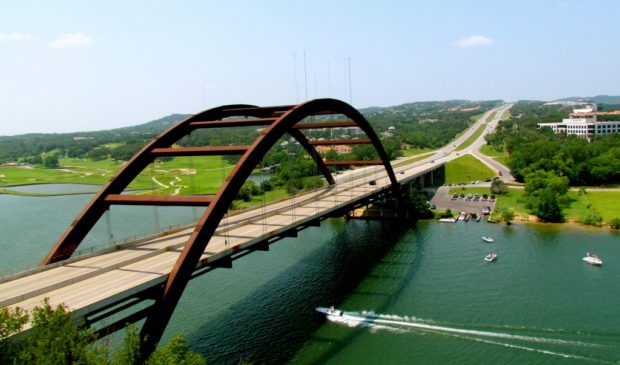-

Newsletter Signup
The Austin Monitor thanks its sponsors. Become one.
Most Popular Stories
-
Discover News By District
Key Players & Topics In This Article
TxDOT: The transportation agency for the State of Texas.

Faced with increasing congestion, the Texas Department of Transportation is narrowing its options for the potential transformation of Loop 360.
The agency published on Friday a 50-page study of the highway. It envisions nine separate scenarios that range from doing nothing to expanding the West Austin highway into a four-lane freeway flanked by managed toll lanes and frontage roads.
The options in between those extremes include enhancing signal technologies, redesigning existing intersections, building grade-separated crossings at major intersections and planting flyover connections at each of Loop 360’s termini at U.S. Highway 183 to the north and the MoPac Expressway to the south.
Every scenario would maintain wide shoulders for bicyclists, while only two – those that call for brand-new managed lanes – include transit-specific upgrades.
TxDOT has tried twice in the past two years to launch efforts to revamp Loop 360, but both initiatives died after public outcry over the proposals. The new study represents an attempt to hit the reset button, complete with an extended round of public engagement among stakeholder groups.
According to the document, that effort included “adjacent property owners, leaders of neighborhood and civic organizations, school administrators, emergency response staff, and business owners along the corridor, as well as representatives from local bicycle and environmental organizations.”
One of the aims of the project is to “maximize safety” along the highway. From 2012 to 2014, the 14.5-mile-long corridor saw 942 crashes that killed two people and traumatically injured 30 more. Pedestrians or cyclists were involved in 15 of those crashes and accounted for one of the two fatalities.
According to the document, TxDOT planners seem to have no stomach for the do-nothing option or for the two scenarios that would create a limited-access freeway. The latter two would require significant reconfigurations of the Pennybacker Bridge and cost between $576 million and $600 million.
The document concludes, “Although these two options provided the greatest increase in capacity, they did so with significant increases in environmental and construction costs, as well as generated the most disruption to existing traffic during construction.”
Instead, the document notes that the remaining options could be implemented incrementally, which would allow for quicker and more flexible funding solutions and also fewer construction-related disruptions.
One potential source of funding is Mayor Steve Adler’s $720 million transportation bond proposal that voters will decide on this Tuesday. That package earmarks more than $100 million for regional highway projects, including unspecified work on Loop 360. Adler has said in recent weeks that the money could be used to lure TxDOT and its much deeper pockets to prioritize projects along the highway.
Photo by Jeff Gunn made available through a Creative Commons license.
The Austin Monitor’s work is made possible by donations from the community. Though our reporting covers donors from time to time, we are careful to keep business and editorial efforts separate while maintaining transparency. A complete list of donors is available here, and our code of ethics is explained here.
And we’re honored you look to us for serious, in-depth news. You know a strong community needs local and dedicated watchdog reporting. We’re here for you and that won’t change. Now will you take the powerful next step and support our nonprofit news organization?